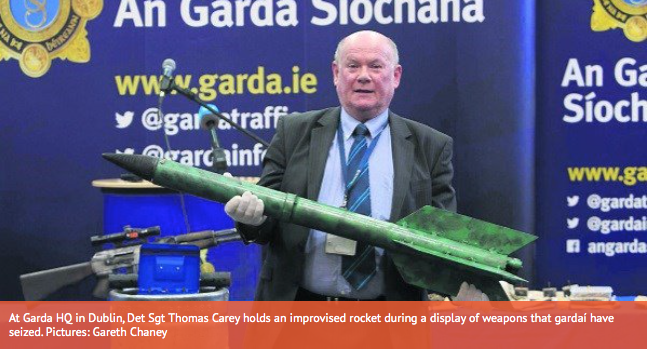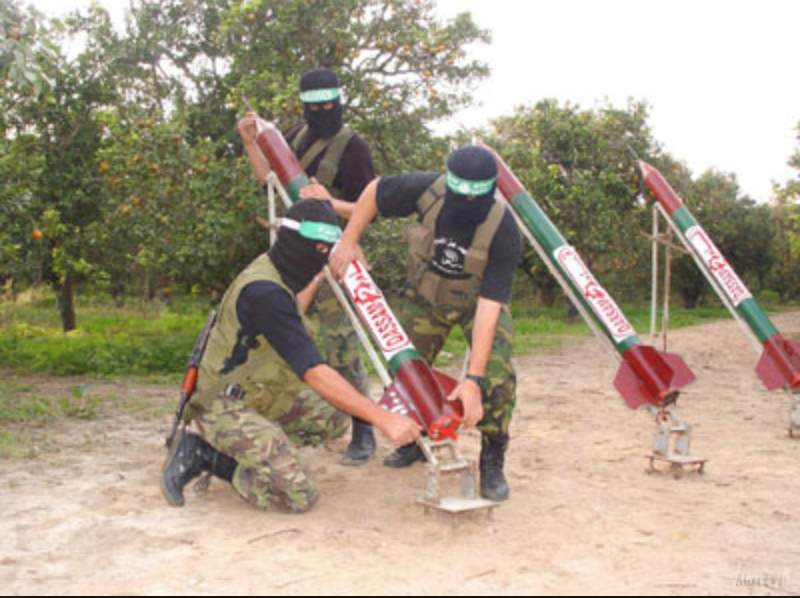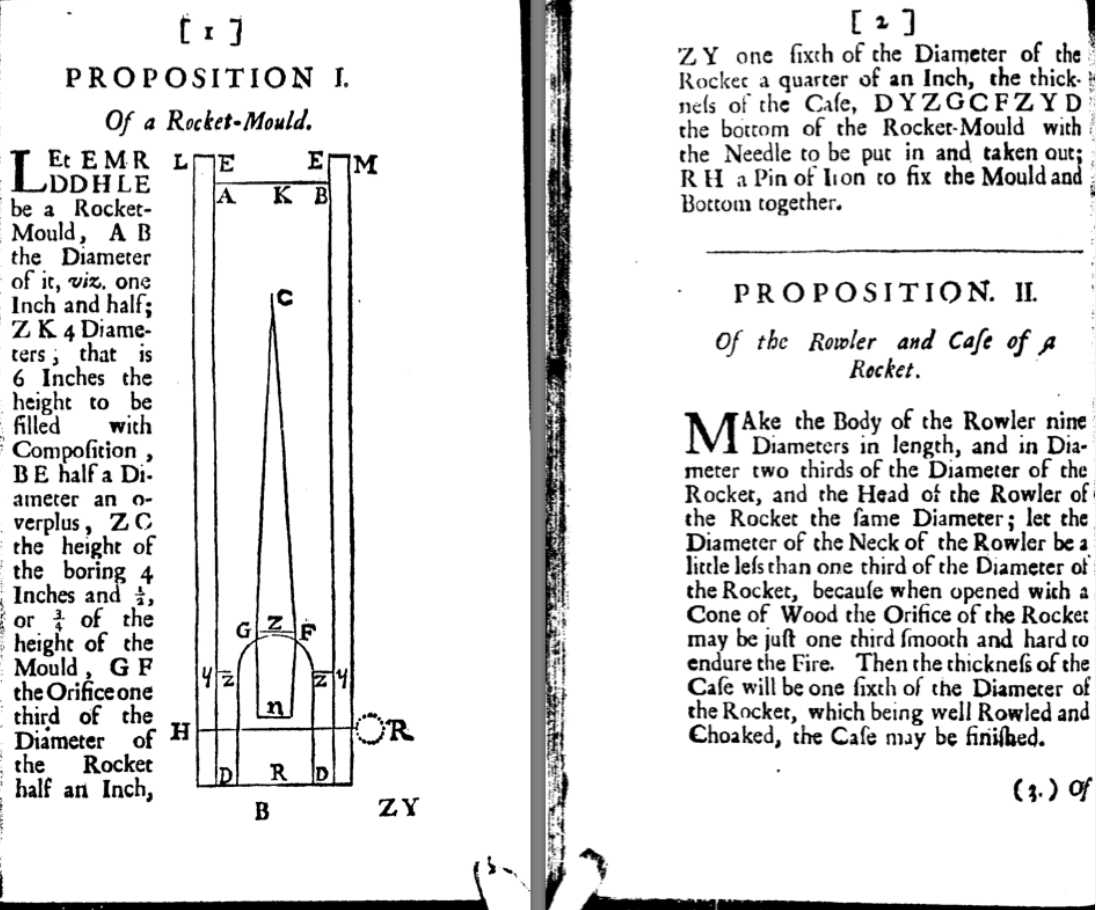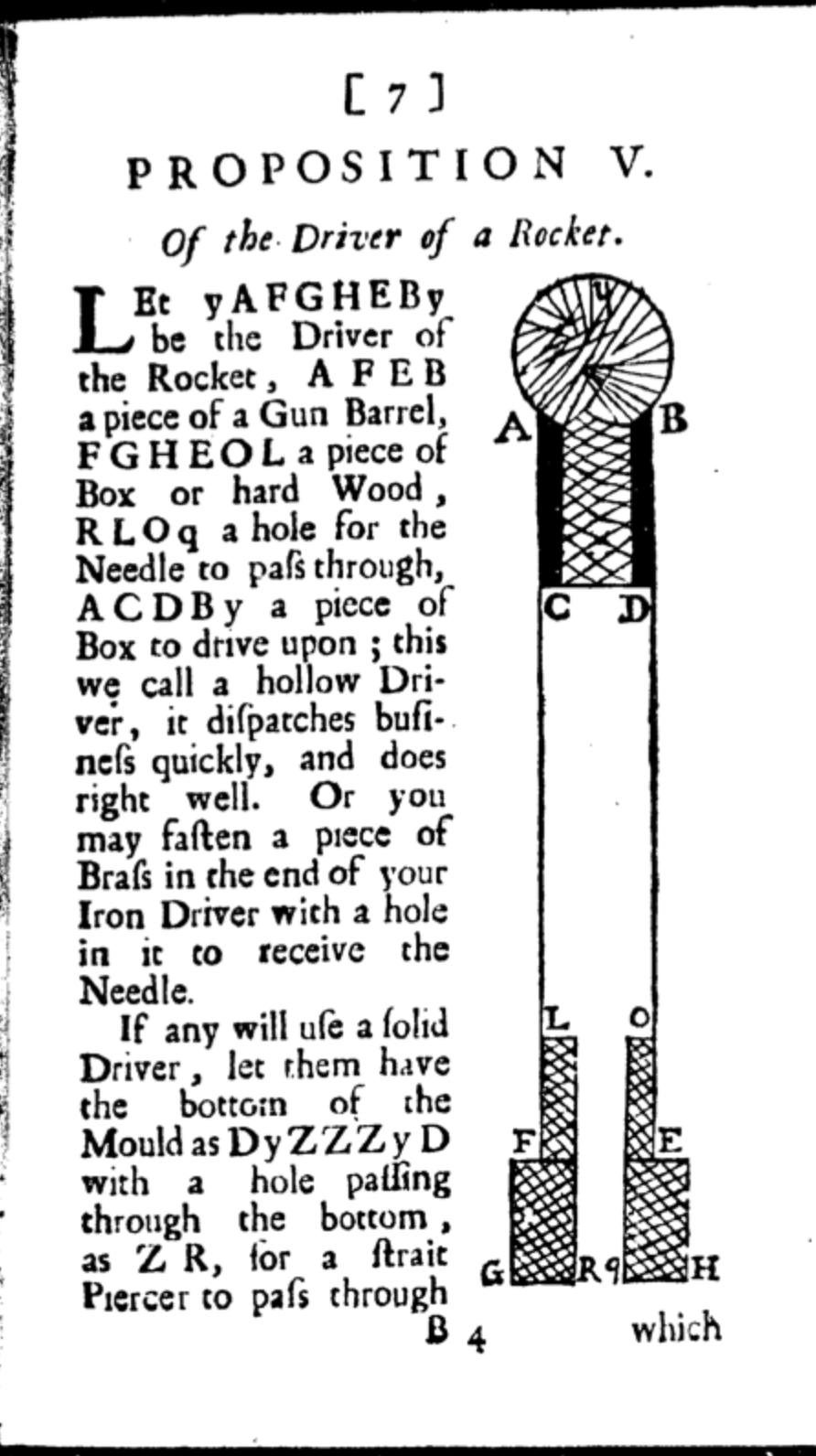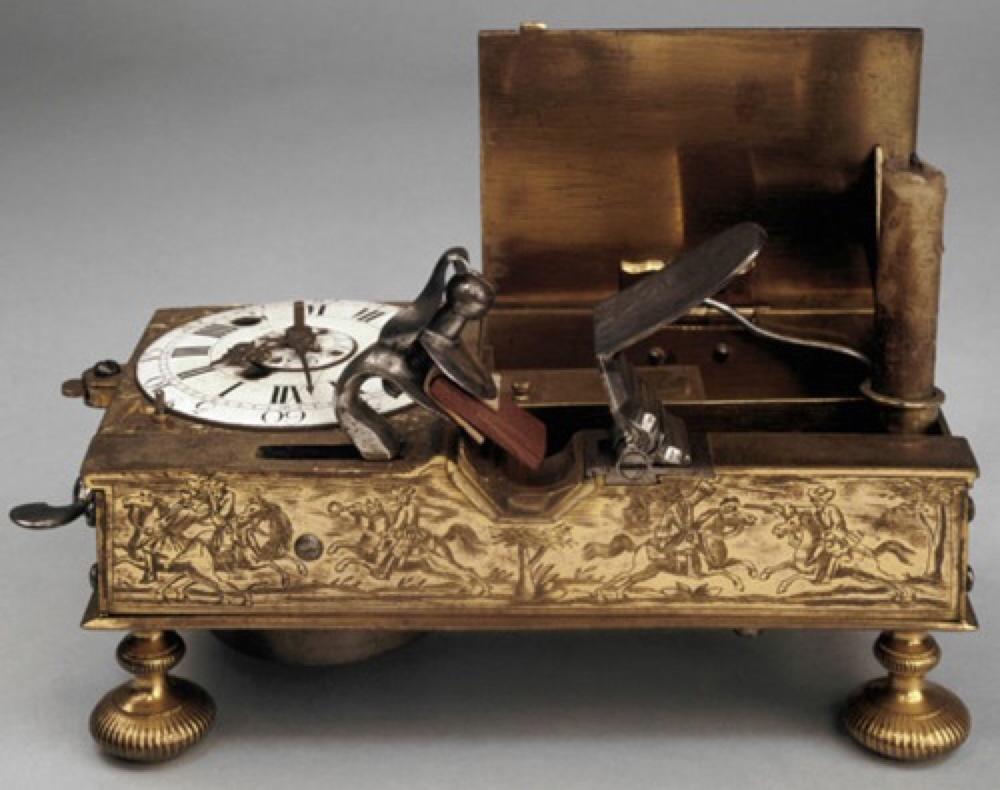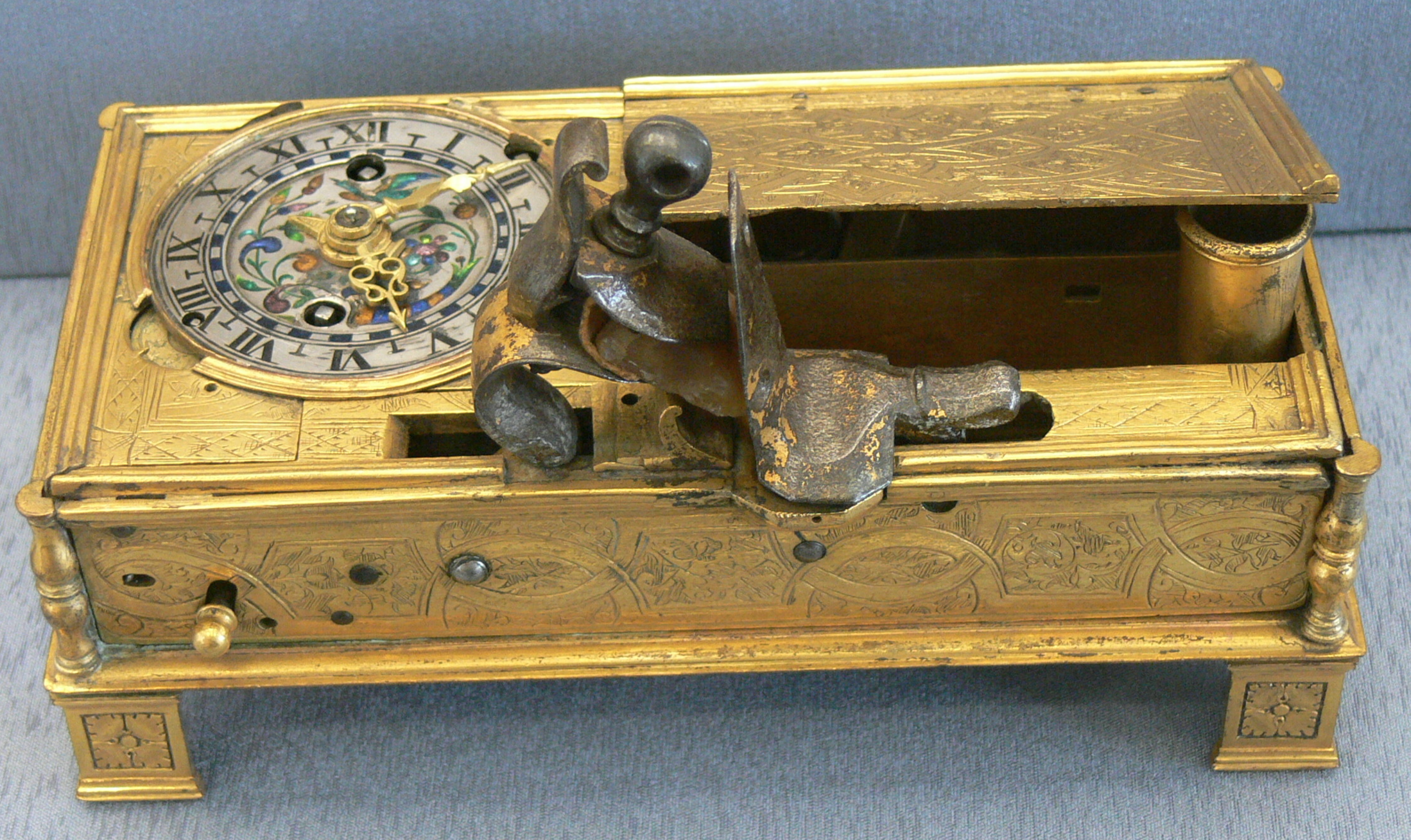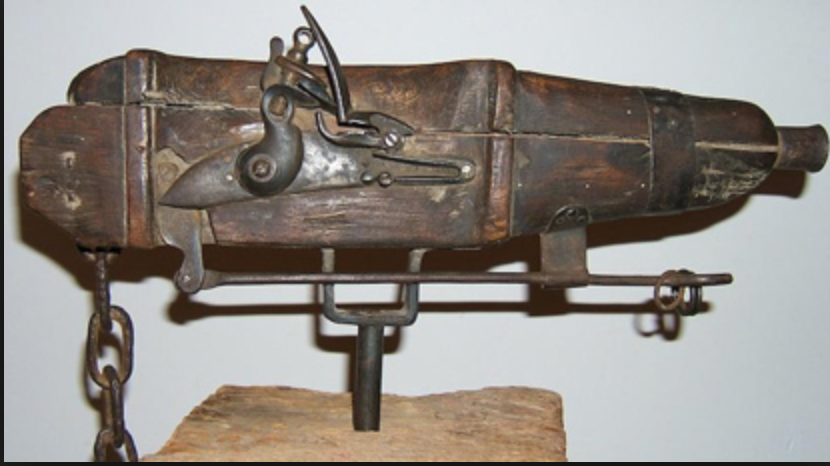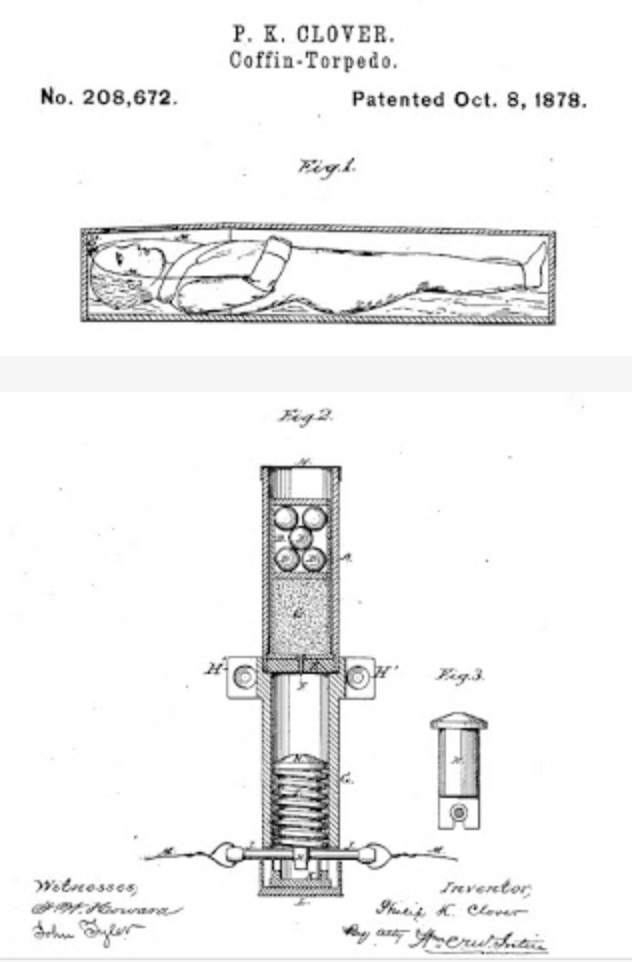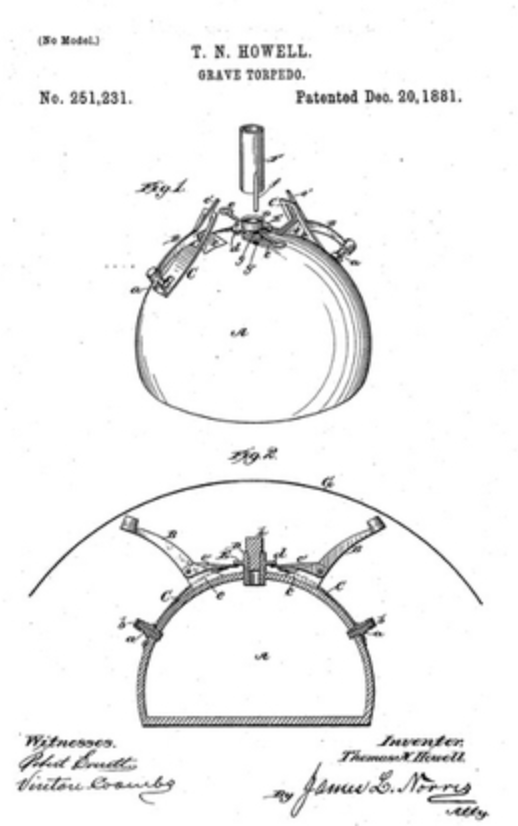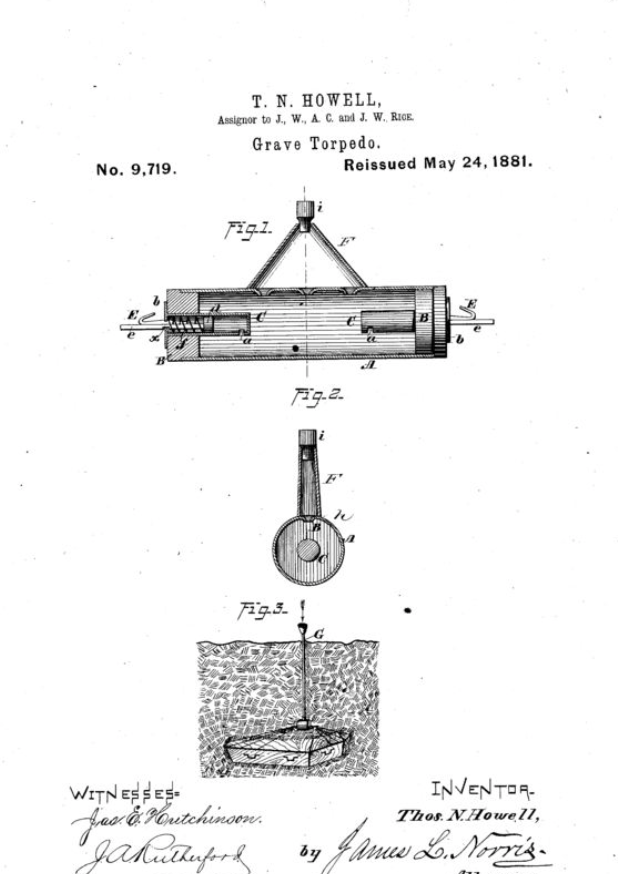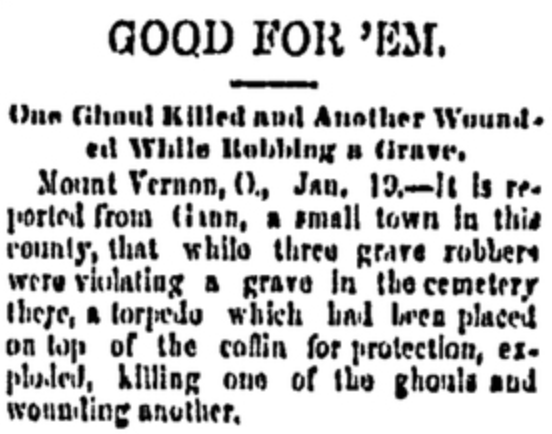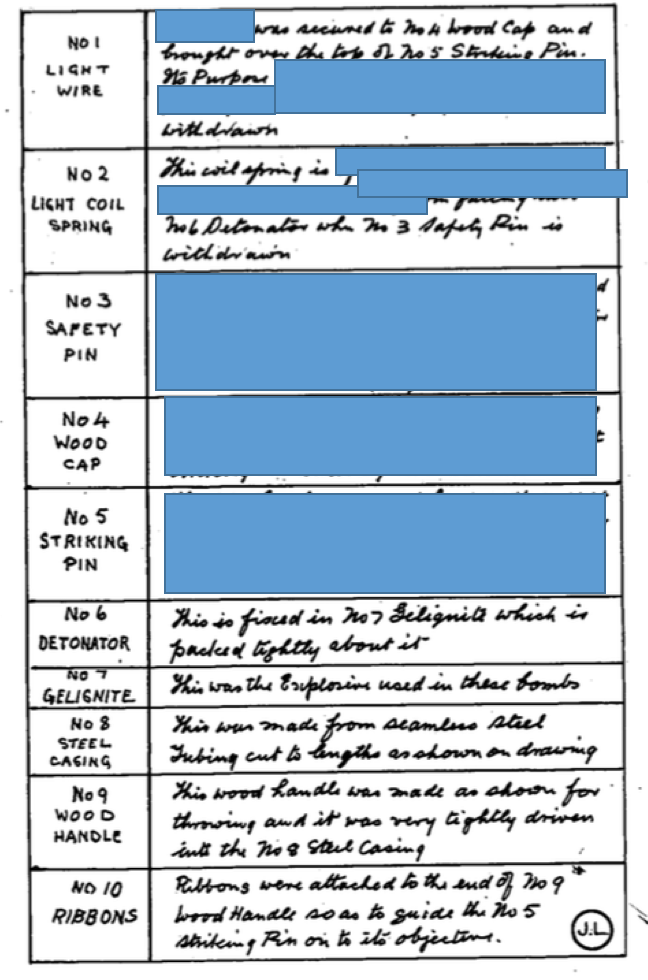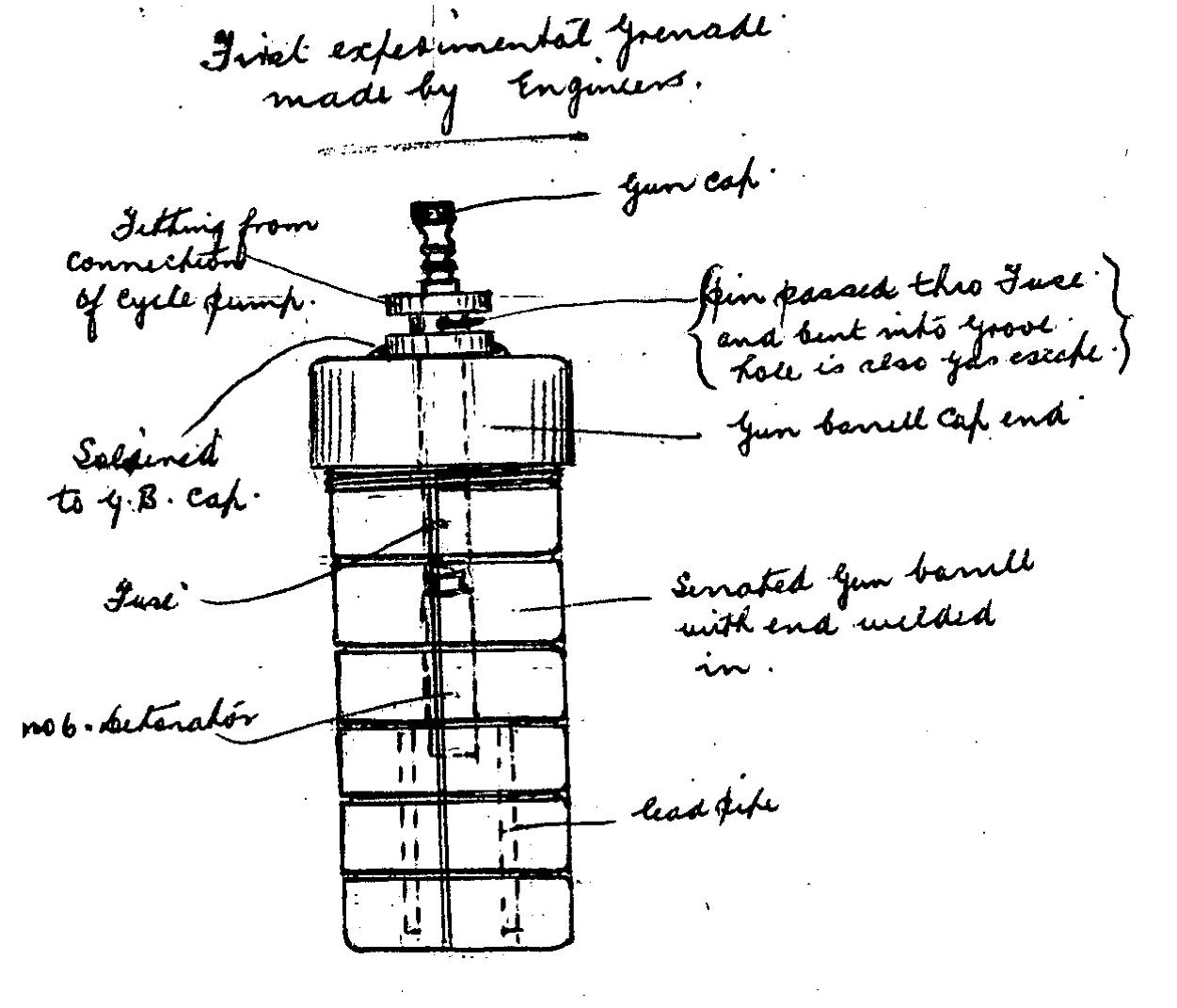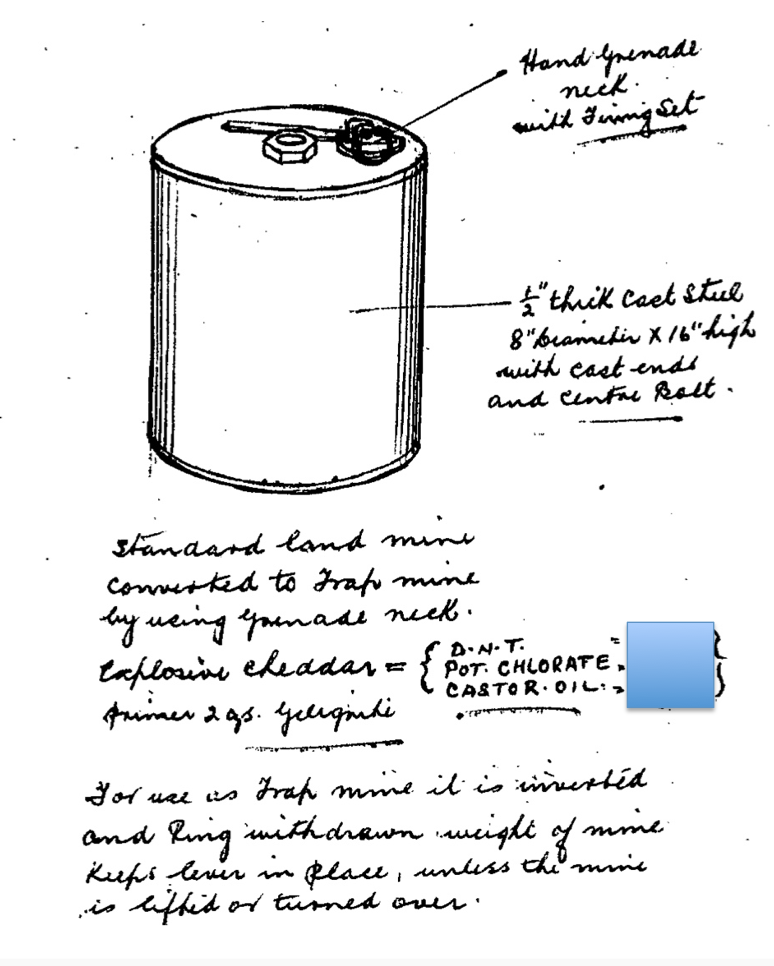Earlier bogs have reported the use of Irish revolutionary improvised munitions as far back as 1803. Use of IRA improvised weapons has been a theme for hundreds of years. I have found a long and detailed statement by an IRA weapons engineer called Patrick McHugh, given in 1952 which sheds some remarkable insight into IRA improvised weapon production between 1919 and 1922. It is generally thought that IRA imporvised mortar development started in 1970, but this shows that that date is out by about 50 years.
In 1919 the Irish volunteers established an “underground” muntions factory at 198 Parnell St in Dublin, under Michael Lynch, disguised in the cellar of a cycle business called “Heron and Lawless”. The facility was equipped with a furnace and a mould trough for casting grenade casings, a forge and a lathe. An electric light was controlled by a switch to the shop above and used to warn of danger. In such an emergency grenade casing and parts could be hidden in the forge bellows.
All moulding and casting of grenades and “shells” was done in small moulding boxes, each box containing eight shells. Both brass and iron were cast – brass for the fuze fittings. Then subsequent machining of the cast components was also undertaken at the premises. The output was about 100 improvised grenades a week, and the cost was established as 9 shillings per grenade.
The grenades , empty, were taken to a room in a house in Dominick St were they were filled with gelignite explosive and fuzed. The grenade was small and described as the size of a duck egg. This is a description of the fuze mechanism, verbatim from McHugh:
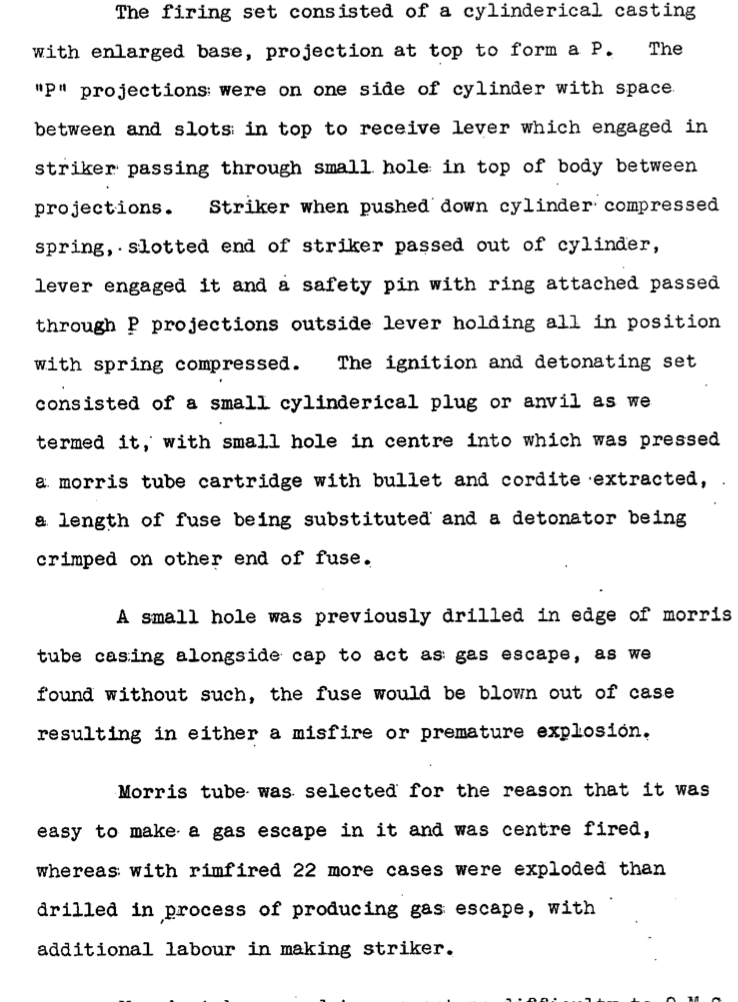
It is a little difficult to interpret without a diagram. My assessment is that a safety pin held a spring striker. The striker struck a centre fired bullet case, with bullet and propellant removed and a short length of delay fuse inserted, and the other end having a detonator crimped on.
The detonators were commercial and obtained from quarries. The time delay was nominally set for 4 seconds. Amusingly the lathe used had originally belonged to a jewellers, “Ganter’s”. When WW1 started the lathe was requisitioned by the British government and used in manufacturing shells for the British war effort. Mr Ganter than made a a formal application for it to be returned. When he got it back he sold it to the IRA for the same purpose. Other tools were obtained from the Broadstone works of the Midland railway. The springs for the grenade fuzes were obtained by a front business importing long springs from overseas and cutting them down to size. Strikers were iron rivets with the head turned down in a lathe to a sharp point. As an aside I have on my desk in front of me another IRA striker from a fuze mechanism and it’s a much cruder design from 1991. The facility was raided twice by the British but on both occasions they found nothing.
Michael Lynch then designed an improvised mortar in 1920. The propellant charge was a 12 bore shotgun cartridge with shot removed and more propellant (black powder) added. The impact fuze was adapted from the grenade fuze, but without the delay. The mortar bomb weighed 11lbs.
The IRA under Matt Furlong conducted some extensive trials of this improvised mortar system in October 1920 in County Meath. First a number of dummy mortar bombs with propellant only were fired, to establish ranges and calculate the propellant charge needed for a range of 100 yards. Then three bombs were fired without a main charge but with an impact fuze fitted to test initiation. The trials established that the bomb tumbled through the air, but despite that, the fuze appeared to work however it struck the ground. One of the engineers believed that the impact fuze was being initiated on “set back” within the mortar tube and not on impact at the target. Attempts to fire a live mortar failed as the bomb got stuck in the tube. Probably fortunately.
The engineers involved were concerned about the impact fuze functioning on “set back” within the mortar tube, so they added an additional safety mechanism (which I won’t describe here) and this was was built in to the fuze for subsequent trials. The second set of trials took place near Kells in County Meath. After firing a live shell with the new safety feature which then failed to function on impact, an argument ensued between Furlong and McHugh. Matt Furlong insisted on removing the additional safety feature and firing the mortar as originally designed. McHugh, nervous, stepped a few yards away. The others retreated. As the mortar bomb was launched it did indeed explode in the tube, severely injuring Matt Furlong, who later died in hospital.
The loss of the mortar was seen as a significant blow to the IRA in Dublin who had expected to be able to mortar British positions and barracks with impunity mounting the mortar on the back of a vehicle, a tactic that they applied successfully 60 years later in the North.
198 Parnell St in Dublin then upped its production of grenades and became a significant munitions store – because it was no longer possible to conceal the product, a steel plate was fitted behind the shop counter and a pistol and grenades kept at the counter itself. In the end the British came across the munition factory and store by accident when no-one was there.
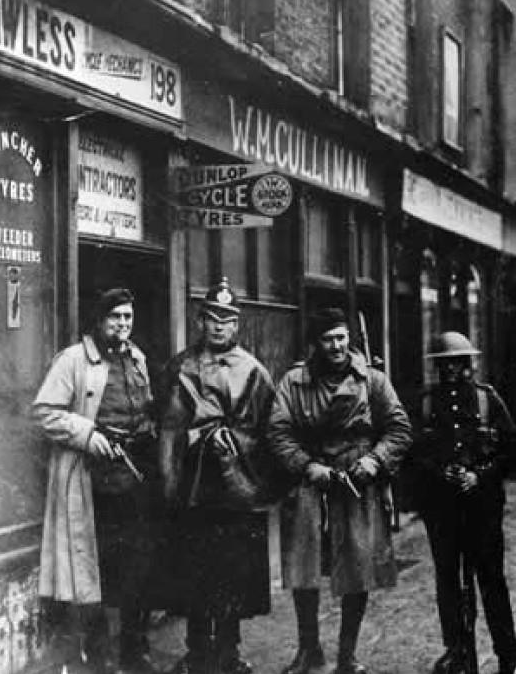
British Forces outside the bicycle shop after the raid.
Other grenade production facilities were established in 1921, with a production capacity of 1000 per week. Later production facilities became even more industrial with revised casting technology improving manufacture. Security too, improved. Every production facility was emptied as work finished so any raids would be inconclusive. Finished munitions were kept in hides, and there was a full time organisation to move them around the city. Faked books to disguise legitimate production runs of legal products were generated, and secret dumps of reserve material were established. McHugh claimed to have personal knowledge of still extant dumps from that time even in 1952 “just in case”.
In 1922 work began on a new IRA mortar, this time based on an oxygen gas cylinder (I kid you not!). The cylinder was used for a barrel, and the mortar bombs were cast iron, pear shaped with 4 fins. The launch tripod was fitted with a quadrant and pendulum to set the angle. The propellant was a shotgun cartridge, again with an augmenting charge of blackpowder. (In 1997 I was still encountering improvised mortars using a blackpowder charge). Trials were undertaken in late 1922 outside Buttevant Barracks. The mortar bombs launched, tumbling as they reached full height then fell nose first. The mortar was used by the IRA in an action against Free State forces in Kilmallock and again at Macroom.
